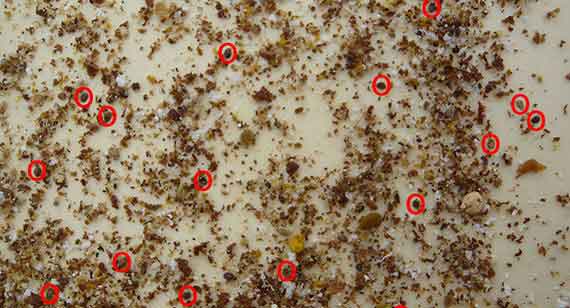The Latest Buzz in Machine Learning Aims to End Bee Colony Collapse

After pesticides, varroa mites are the biggest threat to bee populations. The mites attach to bees, weakening them and causing their young to be born weak or deformed, ultimately killing bee populations through colony collapse. Students from the École Polytechnique Fédérale de Lausanne (EPFL) research institute in Switzerland worked with a group of beekeepers to combine their knowledge of AI with the beekeepers’ passion to find a way to cut down on the number of the parasite-related deaths.
Currently, beekeepers check for the mites in hives by putting a board under the hive and pulling it out every few days to look for dead mites amongst the waste and dirt. The millimeter-sized mites are not easy to spot through this time-consuming process, and if any are missed, it can lead the beekeeper to believe the infestation is getting better instead of worse.
This is where the EPFL students stepped in with their web-linked app that uses AI to quickly and accurately count the number of mites on the board. All the beekeeper needs to do is snap a picture of the board and upload it to the app, which was developed through machine learning—scanning thousands of images to a computer—to teach it to recognize and count the mites. The app produces an accurate count of all the dead parasites on the board in seconds.
The students worked with beekeepers to build up a database of real-life photos of boards to assist in the machine learning and overcome hurdles such as low-quality smartphone photos, bright outdoor lighting, and associating each board to the corresponding hive. The app—now operating at a 90 percent success rate—is helping beekeepers compile nationwide data statistics and search for parasite-resistant bee strains.
Eye on Innovation is a monthly look at new technology, products, and trends.